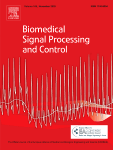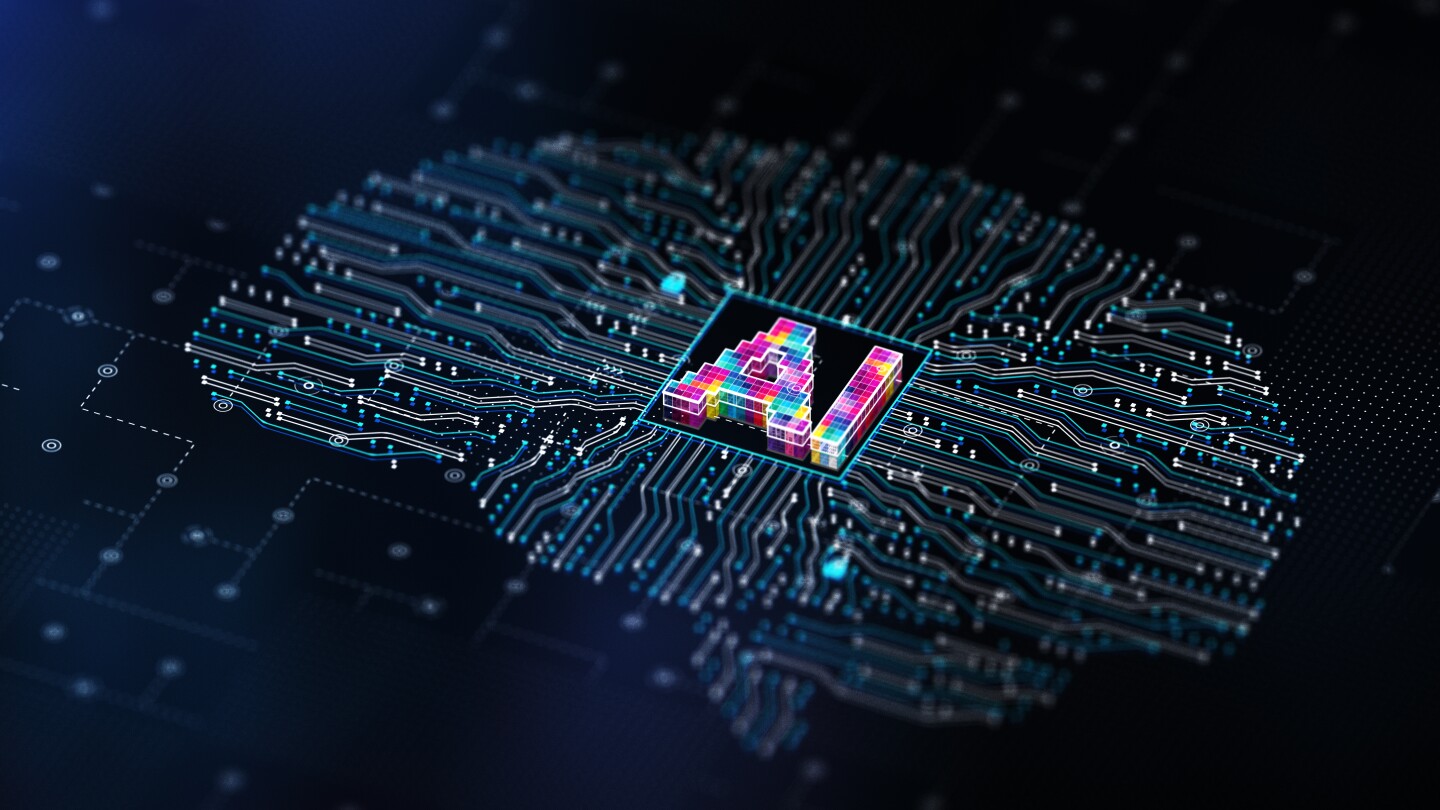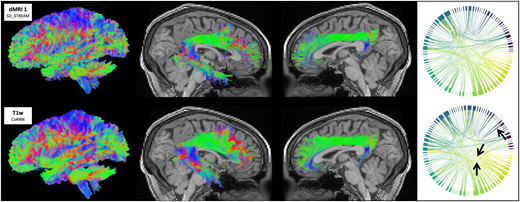What Trump’s AI Action Plan means for policing and public safety From deepfake detection to predictive analytics, Trump’s AI strategy outlines new challenges and capabilities for modern policing July 28, 2025 05:25 PM • At the core of the AI Action Plan are strategies designed to identify and mitigate risks associated with advanced AI technology, particularly

A comparative study on deep learning architectures for a classification of photothrombotic …
Introduction
Deep learning is an advanced machine learning technique based on artificial neural networks inspired by a human brain, especially featuring the capability to automatically extract complex patterns of data by multi-layer neural networks [1,2]. The neural network consists of input, hidden, and output layers. Unlike conventional machine learning algorithms, deep learning architectures have multiple hidden layers, enabling accurate learning of complex features. Based on these characteristics and advantages, deep learning has been actively employed in various industries such as manufacturing [[3], [4], [5]], machine vision inspections [[6], [7], [8]], and finance [9] since the 21st century, when computing power has improved in earnest.
Since recent years, deep learning techniques have been actively applied to biological researches and medical applications due to their merits to improve accuracy and objectivity of data analysis and diagnostics, shorten analysis time, and identify complex biological and diagnostic datasets. For example, several research groups utilized deep learning techniques to analyze genomic data such as gene mutation classification [10,11] and recognition of specific gene sequence patterns [12,13]. Deep learning-based prediction models were developed to predict target proteins and synthetic models for new drug development [14] and to estimate patient response to specific drugs [15]. In the medical field, deep learning techniques have been used to assist doctors and clinical pathologists in their diagnosis and improve diagnostic efficiency. Various deep learning techniques and software as a medical device (SaMD) based on them have begun to be utilized in the clinical site for classifying specific lesions or providing diagnostic assistance information from medical images obtained by X-ray [16,17] and magnetic resonance imaging [18,19]. In histopathological diagnosis, deep learning techniques have been researched for the purpose of diagnosing diseases or classifying lesion tissues [[20], [21], [22]]. Some software products that were approved for medical devices have been used in clinical research and diagnosis supporting [23]. Also, methods of using such deep learning techniques-based analysis for pre-clinical animal model verification and new drug/medical device effectiveness evaluation have studied [24,25].
Photothrombotic animal models are widely used in research on neurological diseases such as stroke, as they are essential for elucidating the mechanisms of injury and evaluating therapeutic effects [[26], [27], [28], [29], [30]]. However, conventional histopathological assessment methods rely heavily on the subjective interpretation of experienced experts, are time-consuming and labor-intensive, and face limitations when analyzing large-scale datasets. In particular, photothrombotic lesions often have indistinct boundaries and high tissue heterogeneity, which can reduce the consistency and reproducibility of manual classification [[30], [31], [32], [33]]. In recent, deep learning-based image analysis techniques have demonstrated significant advantages in automatically analyzing large-scale, high-resolution histopathological images, enabling quantitative and objective lesion classification. Unlike traditional image analysis or machine learning methods, deep learning can autonomously learn meaningful features from data, achieving higher accuracy and reproducibility. Furthermore, it can detect subtle tissue changes and patterns that are difficult to distinguish with the naked eye, thereby overcoming the limitations of conventional approaches. Deep learning applications has been most active in studies that classify tumor tissues in histopathological specimens. M. Chen et al. developed classification and mutation prediction of hepatocellular carcinoma tissues from histological H&E images using a neural network (Inception V3) [34]. An accuracy of this classifier is 96.0 % for benign and malignant classification. N. Wahab et al. developed breast cancer grade classification algorithm from H&E-stained histological tissues for early-stage luminal breast cancer [35]. On the other hand, research on a feasibility of applying AI-based classification to histopathological analysis in stroke animal models, as well as identifying optimal AI models for this specific application, remains limited. In a prior related study in 2021 [25], we developed a technique for classifying normal and ischemic stroke lesion areas using machine learning or classical deep learning architecture with three layers, but it had several limitations of accuracy, iteration numbers, and binary classification capability only. S. Castaneda-Vega et al. used machine learning identifier for identification and localization of ischemic stroke lesion of small animal model in MR images [36]. Pathological brain tissue images were employed for cross-validation of the machine learning identifier and the interspecies applicability of the machine learning model for acute stroke lesion analysis was confirmed. In recent, Engster et al. suggested AI-based classifier for artery segmentation and quantification of plaque in Oil Red O-stained histological whole slide images of mouse model with atherosclerosis, which is a vascular disease related to stroke [37]. It means that studies that apply AI to the diagnosis and classification of histopathology of stroke and cardio-cerebrovascular disease are also beginning.
To address this challenge, we compared recent deep learning architectures for classifications of photothrombotic damaged lesions and regions where necrotic cells caused by photothrombosis were located in histopathological images of a rabbit brain. To be specific, training and test datasets classified into three categories (normal, necrotic cells located region, and photothrombotic lesion) were extracted from histopathological images of brains in photothrombotic rabbit models. And six image classification deep learning architectures (ResNet-18 [38], MobileNet V2 [39], EfficientNet B0 [40], InternImage [41] and DenseNet-121/169[42]) based on convolutional neural network (CNN) were applied to distinguish photothrombotic lesions and necrotic cells located regions from the brain tissue images, and the classification performance of each architecture was compared. All six deep learning classification architectures used in this research offered >98 % accuracy to distinguish three categories in the histopathological brain tissue images. Also, InternImage provided the highest accuracy for classifications in both histopathological image datasets applying two staining methods for tissues (Hematoxylin and Eosin, H&E) and neurons (Cresyl Violet, Nissl).
Section snippets
Sample preparations – Photothrombosis in a rabbit brain and histology
The establishment of ischemic stroke middle animal (rabbit) models using the photothrombosis investigation system were described in a previously published article [43]. All preclinical experiments were approved by the Animal Experiment Ethics Committee of K-MEDI hub (Daegu–Gyeongbuk Medical Innovation Foundation) (IACUC approval number: DGMIF-20061702-00). To establish the photothrombotic rabbit model, 12-week and male four New Zealand White rabbits (Samtaco, Osan, Republic of Korea) were
Performance comparison on H&E-stained dataset
Table 3 presents the performance of the deep learning architectures on the H&E histopathological image dataset. InternImage demonstrates the highest accuracy (99.85 %) and F1 score of 0.9985, indicating superior classification performance in terms of precision and recall. Although it does not achieve the lowers loss (0.0193), its overall metrics suggest strong predictive reliability. InternImage, a model with a large and complex architecture (29.94 M), achieves high accuracy at the cost of
Discussion
In this research, we demonstrated that deep learning architectures can classify photothrombotic lesions and necrotic cell with nuclear shrinkage and pyknosis regions in histological brain tissue images with a high accuracy >98 % by training within 500 epochs. The exceptional performance of DenseNet-121/169 (99.85 % accuracy in H&E-stained image classification) and InternImage (99.85 % accuracy in H&E-stained image classification) likely stems from its ability to detect subtle cellular changes
Concluding remarks
We compared deep learning architectures for classifications of photothrombotic lesion, necrotic cells located region, and normal brain tissue of photothrombosis-induced rabbit models. All six deep learning architectures (ResNet-18, MobileNet V2, EfficientNet B0, InternImage, and DenseNet 121/169) used in this research provided accuracy of over 98 % on training over 500 epochs in histopathological image classifications of photothrombotic lesion. Among the six deep learning architectures,
CRediT authorship contribution statement
Jong-ryul Choi: Writing – review & editing, Writing – original draft, Visualization, Validation, Methodology, Data curation, Conceptualization. Minkwon Jeon: Validation, Software, Methodology. Si Won Choi: Methodology, Data curation. Taegeun Oh: Writing – review & editing, Writing – original draft, Visualization, Validation, Supervision, Software, Methodology, Investigation, Data curation, Conceptualization.
Declaration of competing interest
The authors declare that they have no known competing financial interests or personal relationships that could have appeared to influence the work reported in this paper.
Acknowledgments
This research was supported by a grant of Korea Planning & Evaluation of Industrial Technology, funded by Ministry of Trade, Industry and Energy, Republic of Korea (Grant number: RS-2024-00418388). This research was supported by grants of the Korea Health Technology R&D Project through the Korea Health Industry Development Institute (KHIDI) funded by the Ministry of Health & Welfare (HI17C1501). This research was supported by the Research Support Center of Dong Seoul University in 2024. The
© 2025 Elsevier Ltd. All rights are reserved, including those for text and data mining, AI training, and similar technologies.



